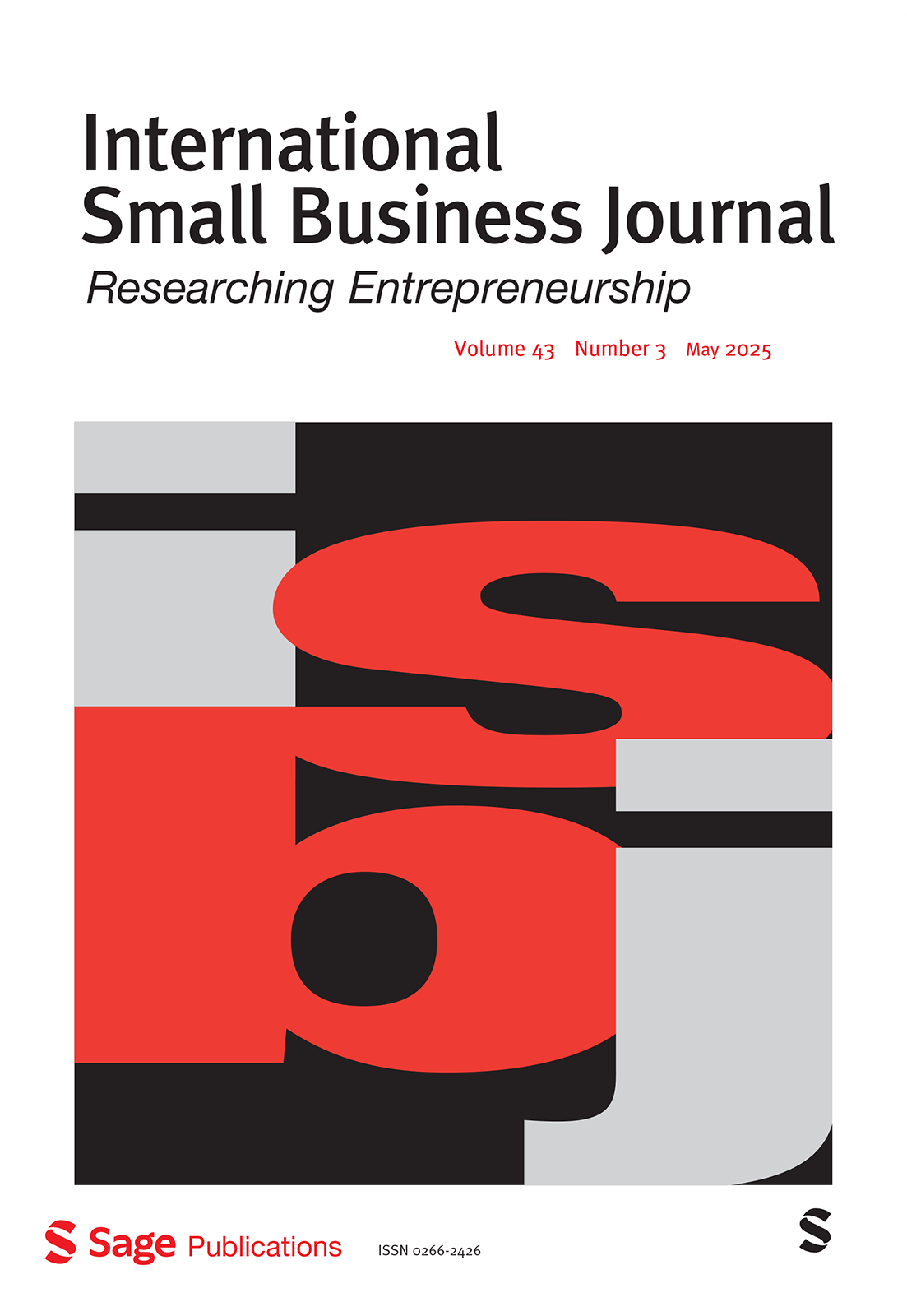What happens when a nonfamily CEO steps into the shoes of the family leader?
Judith van Helvert-Beugels, Mattias Nordqvist, Roberto Flören
Audio > Play / Stop
CeFEO's Authors
CeFEO counts more than 50 scholars and 30 affiliated researchers. Several studies and reports have consistently identified CeFEO as a leading research environment worldwide in the area of ownership and family business studies.
This research project, has been co-authored by the following CeFEO Members.
Reference
Spotlight highlights research-based findings only. If you’re interested in exploring this project further or delving into the theoretical and methodological details, we encourage you to contact the authors or read the full article for a comprehensive understanding.

van Helvert-Beugels, J., Nordqvist, M., & Flören, R. (2020). Managing tensions as paradox in CEO succession: The case of nonfamily CEO in a family firm. International Small Business Journal: Researching Entrepreneurship, 38(3), 211–242.
https://doi.org/10.1177/0266242619898609

What is Spotlight?
Spotlight is an innovative online family business magazine designed to bridge the gap between cutting-edge research and the real-world needs of practitioners, owners, and policymakers. Drawing on the latest findings from the Centre for Family Entrepreneurship and Ownership (CeFEO) at Jönköping International Business School, Spotlight delivers insightful, accessible summaries of key research topics. Our mission is to keep the family business community informed and empowered by offering actionable insights, expert analyses, and forward-thinking strategies that enhance business leadership and ownership practices for long-term success.

This article is brought to you by the WIFU Foundation
Spotlight is generously supported by the WIFU Foundation, which promotes research, education, and dialogue in the field of family business. This partnership enables us to continue bridging academic insights and real-world practice for the advancement of responsible family entrepreneurship and ownership.
Managing tensions when hiring a nonfamily CEO
Passing leadership from a family CEO to a nonfamily successor is no longer a rare event—but it remains a delicate and complex transition. For many family firms, this shift marks more than a change in leadership style—it’s a transformation in culture, communication, and control. This article unpacks the findings from a rare longitudinal case study of a Dutch family firm, offering a fresh perspective on how embracing tensions as paradoxes can foster healthier relationships, more resilient structures, and long-term strategic alignment. For any family business considering a nonfamily CEO, these insights are both cautionary and empowering.
Passing leadership from a family CEO to a nonfamily successor is no longer a rare event—but it remains a delicate and complex transition. For many family firms, this shift marks more than a change in leadership style—it’s a transformation in culture, communication, and control. This article unpacks the findings from a rare longitudinal case study of a Dutch family firm, offering a fresh perspective on how embracing tensions as paradoxes can foster healthier relationships, more resilient structures, and long-term strategic alignment. For any family business considering a nonfamily CEO, these insights are both cautionary and empowering.
In today’s dynamic business environment, family firms are increasingly considering non-family CEOs as part of their succession planning. Sometimes this choice is driven by necessity, no suitable or willing family successor is available. Other times, it reflects a strategic decision to bring in external expertise. However, while appointing a nonfamily CEO may appear as a rational response to succession challenges, it often triggers deeper emotional, relational, and structural tensions.
These tensions aren’t just transitional—they can shape the future trajectory of the business. This article, grounded in a real-time, three-year longitudinal study, reveals how one family firm navigated the paradoxes that emerged when the founder handed over operational control to a nonfamily CEO. Rather than resolving tensions, the firm learned to manage them, not in spite of their complexity, but because of it.
What We Studied
The research, conducted by van Helvert-Beugels, Nordqvist, and Flören, explored the transition from a family to a nonfamily CEO in a Dutch engineering firm, pseudonymously named Solar Innovations Group (SIG). Using an in-depth, longitudinal case study spanning three years, the researchers observed advisory board meetings, conducted interviews, and reviewed internal communications to track the evolution of work relationships following the succession.
Importantly, the study applied paradox theory, a conceptual approach that acknowledges tensions as ongoing, interdependent contradictions that can be managed but not eliminated. By framing these challenges through a systems lens, the study contributes new insights into how family firms operate at the intersection of ownership, business, and family.
Key Insights
1. Four Fundamental Tensions Emerge Post-Succession
The transition triggered persistent, systemic tensions across four areas:
- Professionalisation: The need for formal structures clashed with the company’s informal, family-oriented culture.
- Collaboration: Both parties wrestled with how to share decision-making and influence, especially around strategic direction.
- Resource Allocation: A divide emerged between the CEO’s focus on operational efficiency and the family’s desire to sustain innovation.
- Role Transition: Family owners struggled to relinquish operational control while maintaining emotional and strategic engagement.
Each of these tensions reflected broader paradoxes in organizational life, such as structure vs. flexibility, tradition vs. change, and control vs. autonomy.
2. Paradox Management Offers a New Path Forward
Instead of resolving tensions through compromise or dominance, the study advocates for embracing them as paradoxes. This means:
- Accepting that contradictory demands can co-exist.
- Navigating tensions through behavioral adjustments and systemic changes.
- Encouraging "both/and" thinking rather than "either/or" decision-making.
This mindset enabled the family and non-family CEOs to engage in joint sense-making, reduce friction, and co-create new governance norms.
3. The Advisory Board as a Crucial Mediator
A standout finding is the pivotal role of SIG’s advisory board, which evolved into a supervisory board during the transition. Its functions included:
- Translating between family expectations and CEO goals.
- Facilitating conversations about power, autonomy, and priorities.
- Supporting the family’s emotional journey as they adjusted to a more distant, owner-only role.
The board helped render latent tensions visible, creating safe spaces for both parties to express concerns and recalibrate expectations.
4. Family Culture Meets External Leadership
Cultural misalignment often underlies tensions in CEO succession. In SIG’s case:
- The incoming CEO needed to develop "cultural competence" to understand implicit family values.
- The family had to adapt to professional norms of performance evaluation, planning, and accountability.
Rather than abandoning culture, the firm gradually built systems that integrated professionalism with the legacy of innovation and trust.
Takeaways
For Family Business Owners
- Plan beyond the appointment: Succession doesn’t end with hiring. It's a long-term relational and structural transformation.
- Formalize governance early: Structures like supervisory boards can help preserve strategic influence while empowering the new CEO.
- Own your new role: Transitioning from operator to owner requires clarity, learning, and sometimes, letting go.
For Nonfamily CEOs
- Understand the family system: Your technical competence must be matched by cultural sensitivity.
- Invite collaboration: Include the family in planning processes without ceding your autonomy.
- Be patient with trust: It takes time to build legitimacy in a deeply personal business context.
Impact
This study deepens our understanding of CEO succession in family firms, not just as a leadership issue, but as a complex social system transformation. It suggests that successful succession is less about avoiding conflict and more about learning to navigate tensions in a productive manner.
As more family firms face generational change and leadership scarcity, the findings offer a practical, research-backed framework for thinking about succession as a paradox to manage, not a problem to solve.
Recommendations
For family firms contemplating nonfamily leadership, consider these next steps:
- Prepare structurally: Establish a board or external advisors before the transition.
- Engage emotionally: Make space for conversations about identity, legacy, and control.
- Think long-term: Focus not just on succession, but on sustaining effective work relationships post-transition.
The road may be complex—but with the right tools and mindset, it can also be transformative.

CeFEO's Authors
CeFEO counts more than 50 scholars and 30 affiliated researchers. Several studies and reports have consistently identified CeFEO as a leading research environment worldwide in the area of ownership and family business studies. This research project, has been co-authored by the following CeFEO Members.
Reference
Spotlight highlights research-based findings only. If you’re interested in exploring this project further or delving into the theoretical and methodological details, we encourage you to contact the authors or read the full article for a comprehensive understanding.

van Helvert-Beugels, J., Nordqvist, M., & Flören, R. (2020). Managing tensions as paradox in CEO succession: The case of nonfamily CEO in a family firm. International Small Business Journal: Researching Entrepreneurship, 38(3), 211–242.
https://doi.org/10.1177/0266242619898609

What is Spotlight?
Spotlight is an innovative, AI-powered, online family business magazine designed to bridge the gap between cutting-edge research and the real-world needs of practitioners, owners, and policymakers. Drawing on the latest findings from the Centre for Family Entrepreneurship and Ownership (CeFEO) at Jönköping International Business School, Spotlight delivers insightful, accessible summaries of key research topics. Our mission is to keep the family business community informed and empowered by offering actionable insights, expert analyses, and forward-thinking strategies that enhance business leadership and ownership practices for long-term success.

This article is brought to you by the WIFU Foundation
Spotlight is generously supported by the WIFU Foundation, which promotes research, education, and dialogue in the field of family business. This partnership enables us to continue bridging academic insights and real-world practice for the advancement of responsible family entrepreneurship and ownership.










